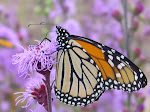 New Jersey Tea (Ceanothus americanus)
New Jersey Tea (Ceanothus americanus)From The Boston Gazette, 1768: "Tea made from a plant or shrub (Ceanothus americanus) grown in Pearsontown about 20 miles from Portland, Maine, was served to a circle of ladies and gentlemen in Newbury Port, who pronounced it nearly, if not quite, its equal in flavor to genuine Bohea tea.
So important a discovery claims attention, especially at this crisis. If we have the plant, nothing is wanted but the process of curing it into tea of our own manufacture." This brew was quite popular during the American Revolution, instead of British tea.
It had many colloquial names: New Jersey Tea, Indian Tea, Walpole Tea, and Redroot, among others. Ironically, it was also shipped to Great Britain and the rest of Europe, as one of America's earliest exports.
To brew your own, first roast the leaves of Ceanothus americanus (available in herb shops and health food stores) in a "slow oven," about 250-300 degrees F., until crisp. Steep the roasted leaves in a cup of boiling water, about one teaspoon per cup. Add honey or brown sugar to taste.
Source http://www.umaine.edu/ceskl/Dishrag10,11,12%2004.pdf as the text appeared at this website.
Photo credit: erik james olsen.

